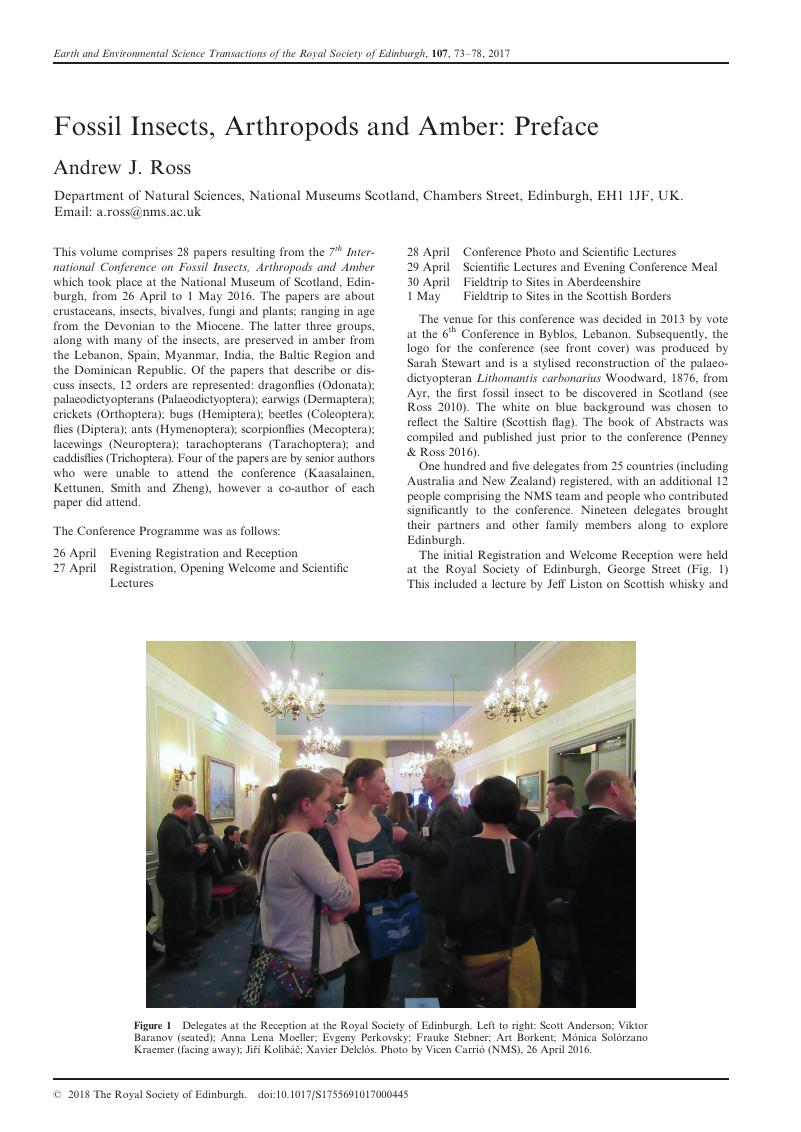Crossref Citations
This article has been cited by the following publications. This list is generated based on data provided by Crossref.
Ross, Andrew J.
Edgecombe, Gregory D.
Clark, Neil D. L.
Bennett, Carys E.
Carrió, Vicen
Contreras-Izquierdo, Rubén
and
Crighton, Bill
2017.
A new terrestrial millipede fauna of earliest Carboniferous (Tournaisian) age from southeastern Scotland helps fill ‘Romer's Gap'.
Earth and Environmental Science Transactions of the Royal Society of Edinburgh,
Vol. 108,
Issue. 1,
p.
99.



